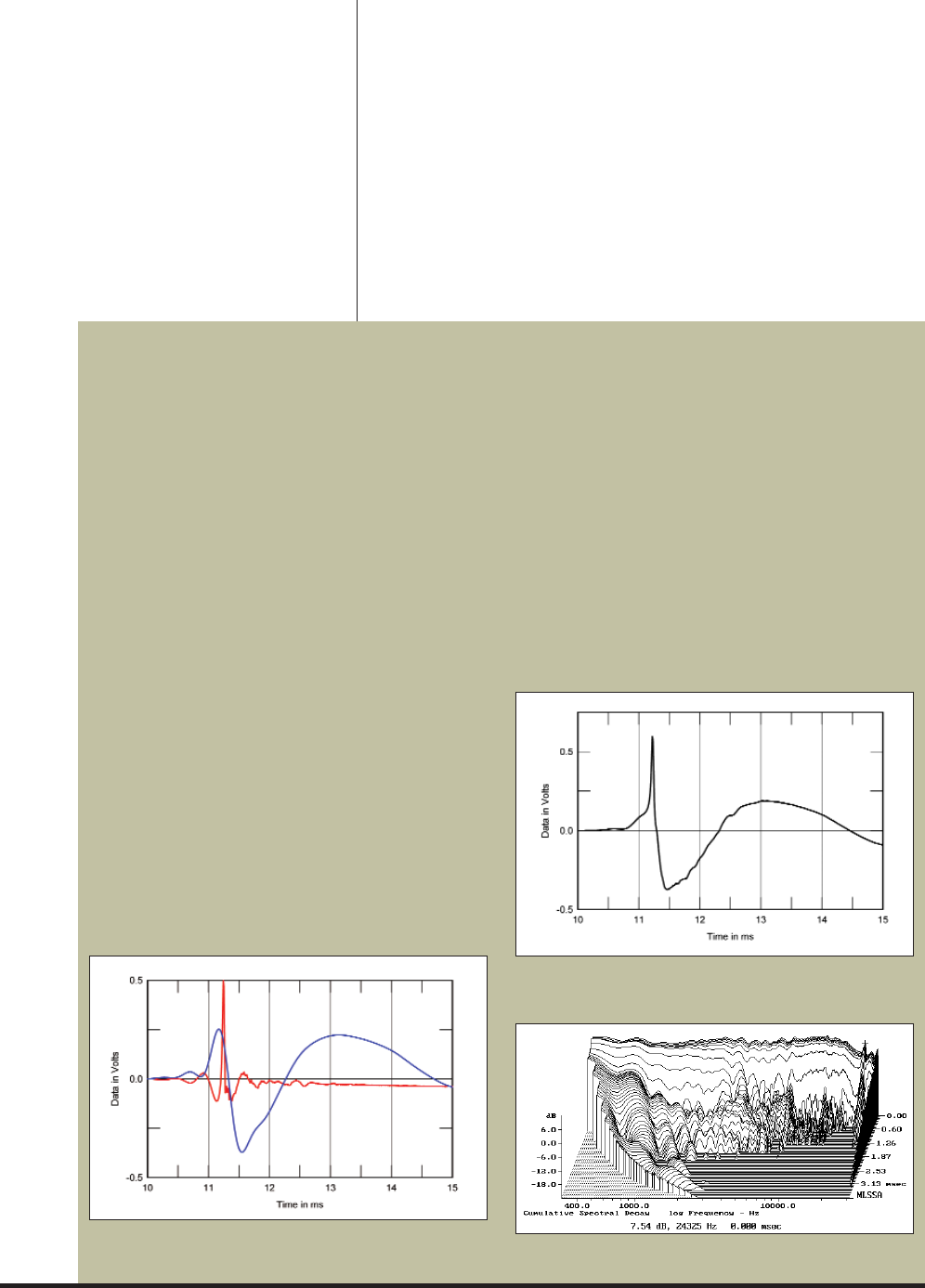
www.Stereophile.com, November 2005
NHT Xd
the general design of class-D amps is
well known, the PowerPhysics designs
are claimed to offer better fidelity,
especially in the higher frequencies,
because of a proprietary feedback
design that provides output correction
on each output cycle, even though the
switching is at rates of 250kHz or
more. Particular attention was paid to
the design of matched switching power
supplies, which virtually eliminate
overheating at high levels but do not
require large heatsinks or fans.
NHT has packaged the amps and
DSP in an attractive black box that takes
up no more space than a stereo power
amp. Such integration means that all
judgments about the Xd must apply to it
as a complete system, without one com-
ponent or another being singled out.
Many boxes, one system
The Xd system arrived in six separate
cartons, but unpacking and assembling it
was pretty simple. There’s a Setup Guide,
but most of the work consists of screwing
a long, threaded steel rod into the bottom
of each XdS satellite, slipping the sculpt-
ed stand shaft over it, and affixing the
heavy base to it with a wing nut. Spikes
or pads are user options. After the XdS is
measurements, continued
shown in fig.11. The first thing to note is the different
time scales of these two graphs. Fig.10 shows that the
wavefronts from the unequalized drivers took 3.75 milli-
seconds to reach the microphone, which was 50" away.
By contrast, the outputs of the equalized drivers in fig.11
took 7.5ms longer to reach the microphone. This is the
time taken by the XdA’s digital circuitry to perform its
filtering and equalization functions.
What can also be seen from fig.11 is that each drive-
unit’s step is preceded by some low-frequency ringing.
But because the tweeter’s and woofer’s acoustic outputs
appear to have opposite polarities, this pre-ringing should
to a large extent cancel, at least on the tweeter axis. That
this does in fact happen is shown by the XdS’s overall step
response (fig.12), the tweeter’s positive-going step smooth-
ly handing over to the woofer’s negative-going step, this
in turn correlating with the superb frequency-domain
integration between the two drive-units seen in fig.7.
Finally, the XdS’s waterfall plot on the tweeter axis
(fig.13) features an impressively clean initial decay
across the band. There are two ridges of ultrasonic
delayed energy apparent, one at 26kHz and one at
30kHz, at the rightmost edge of this graph. These are
high enough in frequency not to have any subjective
consequences. However, there is some low-level hash
evident in the mid-treble, perhaps resulting from the
woofer’s residual cone breakup modes.
The combination of the XdS, XdW, and XdA offers
superb measured performance in both the frequency
and time domains. Is the speaker perfect, therefore?
Unfortunately, I have no means of assessing dynamic
range, but it must be remembered that this superb
performance is obtained by shaping the output of what
is still a small drive-unit. Even though the crossover to
the XdW will eliminate the low frequencies that would
otherwise demand large excursions from the XdS’s
woofer cone, I felt in my own auditioning that the
system would not play quite as loud as I wanted it to
in my wilder moments. (I hope to report further on my
experience with the Xd in a “Follow-Up.”) But other than
that minor limitation, this system offers extraordinarily
good performance at what is really an affordable price.
I agree with Kal Rubinson—the Xd system is the best
thing to come down the pike in a long time, and, along
with the pioneering designs from Meridian, a harbinger
of speakers to come. —John Atkinson
Fig.11NHT XdS driven by XdA, step responses on tweeter axis at 50" of
equalized tweeter (red) and woofer (blue). (5ms time window,
30kHz bandwidth.)
Fig.12NHT XdS driven by XdA, equalized step response on tweeter axis
at 50” (5ms time window, 30kHz bandwidth).
Fig.13NHT XdS driven by XdA, cumulative spectral-decay plot at 50”
(0.15ms risetime).













